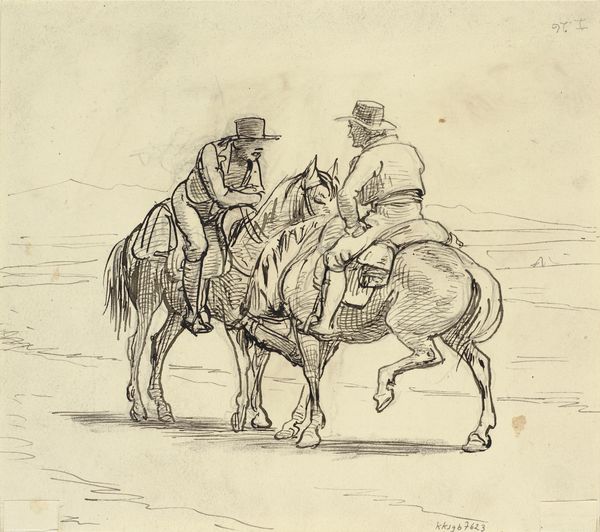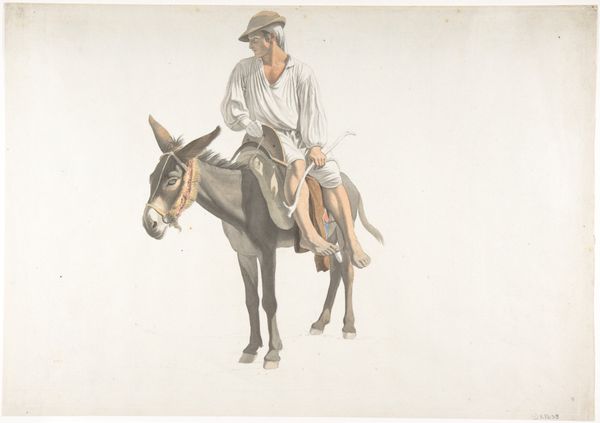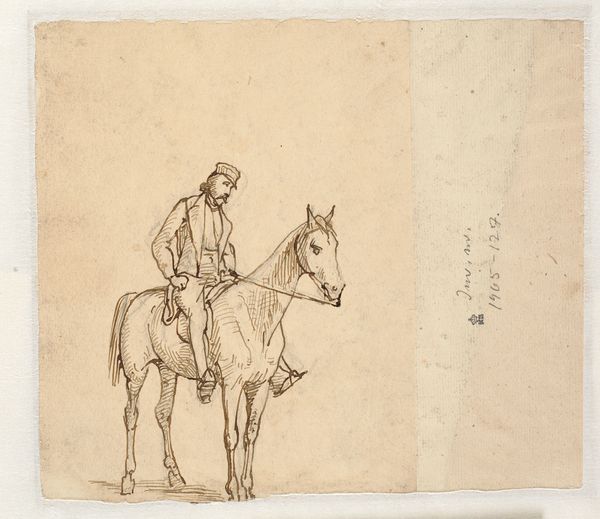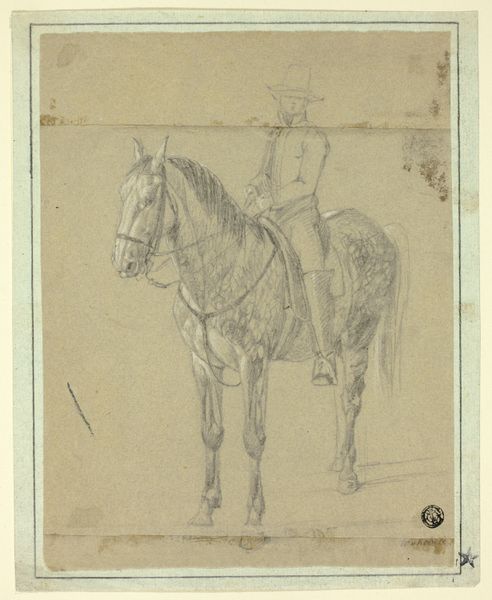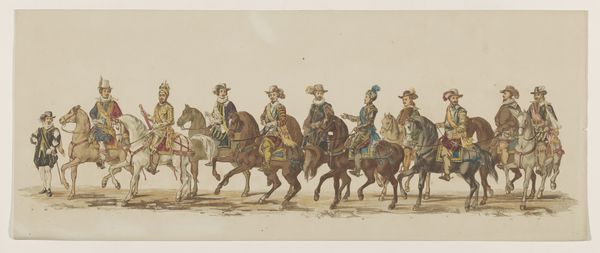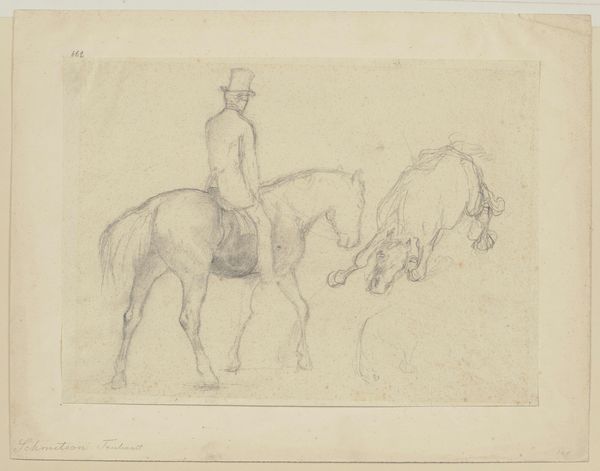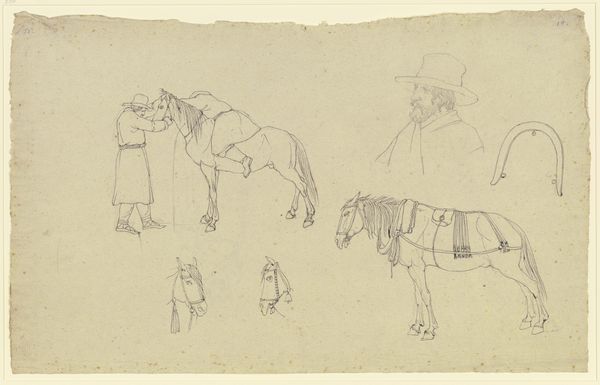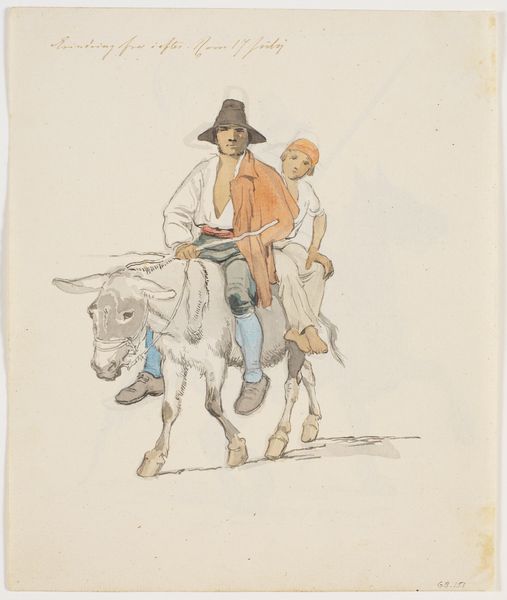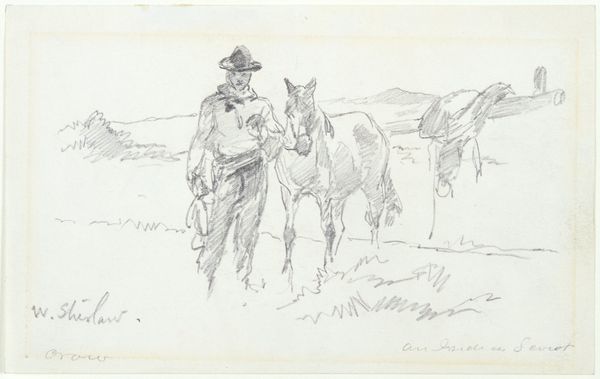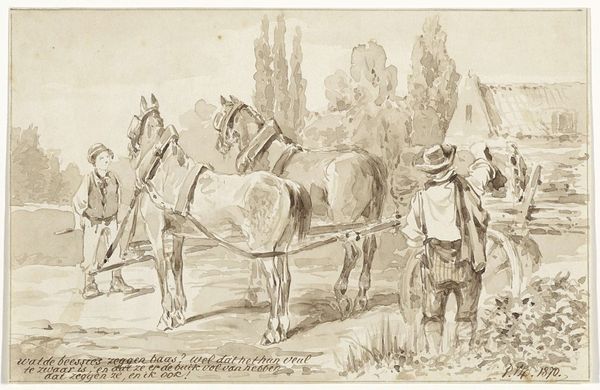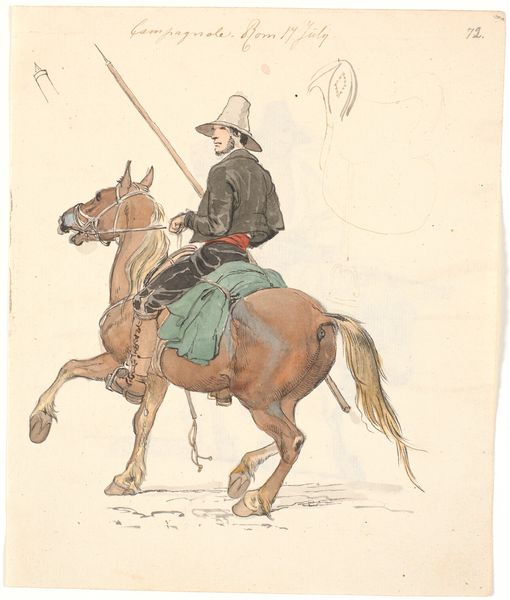
Campagnol til hest, set skråt bagfra. Campagnol til hest set skråt forfra 1845
0:00
0:00
drawing, watercolor
#
portrait
#
drawing
#
landscape
#
watercolor
#
romanticism
#
watercolour illustration
#
sketchbook art
Dimensions: 239 mm (height) x 360 mm (width) (bladmaal)
Editor: So, we have "Campagnol til hest, set skr\u00e5t bagfra. Campagnol til hest set skr\u00e5t forfra" by Johan Thomas Lundbye, made in 1845. It's a watercolor and drawing piece, featuring two studies of a rider on horseback. The one on the right is more vividly colored, the one on the left appears unfinished. What jumps out to you in this artwork? Curator: What I find compelling is Lundbye's choice to depict the same subject twice, using different techniques. One is a raw sketch, while the other displays a careful application of watercolor. This juxtaposition draws attention to the labor involved in artistic production. Notice the clear distinction: the sketch emphasizes process, while the colored version leans toward finished product. It's a visible demonstration of artistic labor. Editor: That's interesting! The materiality definitely sets them apart. Does the subject matter—the horse and rider—have any bearing on this contrast? Curator: Absolutely. Consider the social context of 1845. Horses were central to transportation, agriculture, and even military power. Lundbye presenting the same rider in these different states of production arguably reveals the underpinnings of Romantic notions of man in harmony with nature: labor and class difference is glossed by "artistic sensibility," yet the materials reveal something quite different. Are we looking at an officer, or a working-class farm hand? The artistic labour involved points us to those very considerations. Editor: I see your point. The materiality really grounds it. I initially saw them as simply different stages, but you’re right—the finished product hides a lot of the physical effort. Curator: Precisely! And that's something easily overlooked in romantic portrayals, so closely tied to nationalism and idealisation. Editor: Well, that gives me a lot to think about in terms of production, class and how those interplay with Romanticism! Thank you. Curator: My pleasure. Analyzing materiality unveils many hidden truths.
Comments
No comments
Be the first to comment and join the conversation on the ultimate creative platform.

